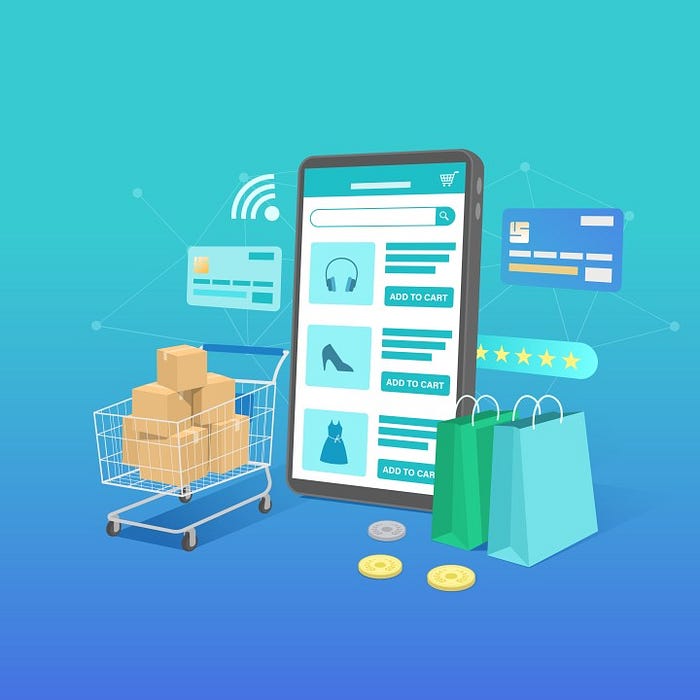
Businesses must adopt the most recent e-commerce development trends in 2025 if they want to keep ahead of the 2025 trend, which has grown significantly over the years. Rapid technological advancement, shifting consumer preferences, and heightened competition have created a need for innovative e-commerce solutions that maximize customer satisfaction and foster corporate success. Any company that wants to succeed in this digital era needs to have a firm understanding of how internet commerce will evolve over time.
The Importance of Keeping Up with E-commerce Trends
The e-commerce industry continues to develop, with companies not up to date with trend risks continuing to develop. Whether it’s the integration of AI-controlled chatbots, the introduction of blockchain technology, or the use of augmented reality for an immersive shopping experience,. If you receive eCommerce Development Trends 2025, you can withdraw the company from your competitors. Implementing innovative e-commerce solutions enables businesses to improve customer satisfaction, increase sales, and create a seamless shopping experience.
Key E-Commerce Development Trends in 2025
1. AI and machine learning for personalized purchases
Artificial intelligence (AI) and machine learning will revolutionize the future of online personal trading by enabling businesses to provide highly personalized shopping experiences. The AI Operations Recommendation Engine analyzes customer data and proposes products tailored to individual preferences. AI integration improves efficiency and customer satisfaction from chatbots that support AI-controlled pricing strategies in real time.
2. Language trade and conversation purchases
Language assistants such as Alexa and Google Assistant play an important role in designing e-commerce development trends Consumers use voice search to search and purchase products online. Companies need to optimize their e-commerce platforms to ensure that language search remains competitive. Innovative e-commerce solutions such as language shopping carts and conversational AI can improve customer commitment and convenience.
3. Augmented Reality (AR) and Virtual Reality (VR) Shopping Experiences
One of the most exciting and innovative e-commerce solutions is creating a UNIVE shopping experience using AR and VR. The AR electric app allows customers to visualize their products in real life before making a purchase. This is particularly advantageous for the fashion, housing, culture, and beauty industries. The VR exhibition room allows customers to explore virtual shops and make online purchases more interactive.
4. Social commerce and influencer marketing
Social media sites are now important components of internet shopping in the future. Customers can buy things straight from feeds thanks to integrated purchasing options offered by Facebook, Instagram, and TikTok. Because customers trust suggestions from content creators who are prioritized, influencer marketing keeps driving up sales. Social networking is essential for businesses looking to expand their customer base and boost conversions.
5. Blockchain for secure and transparent transactions
By enhancing security and transparency, blockchain technology will revolutionize e-commerce development patterns in 2025. Blockchain enables companies to guarantee supply chain dependability, decrease fraud, and offer safe payment options. Blockchain-powered decentralized markets provide up new avenues for safe peer-to-peer exchanges.
6. Sustainable and environmentally friendly e-commerce practices
Sustainability will become a priority in the future of online personal transactions. Consumers are looking for environmentally friendly products and sustainable business practices. The company has eco-friendly initiatives such as biodegradable packaging, carbon-neutral transport, and ethical sourcing. Implementing innovative e-commerce solutions that prioritize sustainability can attract green customers and build trust in your brand.
7. Subscription-based business model
Subscription e-commerce is on the rise, providing businesses with a certain source of revenue and providing customers with customers. This model improves customer loyalty and commitment, from subscription boxes to automatic recovery. Brands use AI to curate personalized subscription experiences. This will become an important part of e-commerce development trends in 2025.
8. Faster and more efficient delivery system
Demand for faster delivery will drive the adoption of innovative e-commerce solutions such as drone delivery, self-driving vehicles, and microfilment centers. Same-day and hour delivery will become the standard that forces businesses to optimize logistics and supply chains. Investing in efficient delivery solutions will enhance the future of online personal transactions by meeting customer expectations for speed and convenience.
9. Mobile-first e-commerce strategy
Since most online buyers use mobile devices, having a mobile-optimized e-commerce platform is essential. Progressive Web apps (PWAS), mobile-friendly interfaces, and payment options with one click are key components of e-commerce development trends in 2025. Companies need to focus on a seamless mobile experience to attract and retain customers.
10. Improved data protection and cybersecurity measures
As e-commerce transactions grow, data protection and cybersecurity are also involved. Companies need to implement strong security measures, including multifactor authentication, encryption, and data protection regulations compliance. Transparency in data processing is important to gain customer trust in the future of online retail.
How can companies adapt to these trends?
To adapt to eCommerce Development Trends 2025, companies need to think about being agile and forward. Here are a few steps a company can take.
- Invest in Technology: Improve your shopping experience with AI, blockchain, and AR/VR.
- Optimize your mobile device: Create a seamless, responsive mobile shopping experience.
- Improved Cybersecurity: Implemented enhanced security protocols to protect customer data.
- Use data analysis. Use AI-controlled knowledge to personalize your marketing and improve customer loyalty.
- Sustainability Initiative: Include eco-friendly practices in your business. Explore new business models: Consider the integration of subscription services, language trade, and social commerce.
Conclusion
Innovation, personalization, and technology will drive online retailing in the future. Businesses may enhance consumer satisfaction, stay competitive, and achieve long-term success by using eCommerce Development Trends 2025. Trendy stays, which range from AI-controlled personalization to environmentally friendly e-commerce strategies, guarantee that companies are connected to the quickly evolving digital market.
Businesses that wish to prosper after 2025 must use cutting-edge e-commerce solutions; it is not a choice. Businesses must remain flexible and perform proactive maintenance to follow new trends as consumer expectations rise in order to provide a smooth, interesting, and effective shopping experience.
Comments